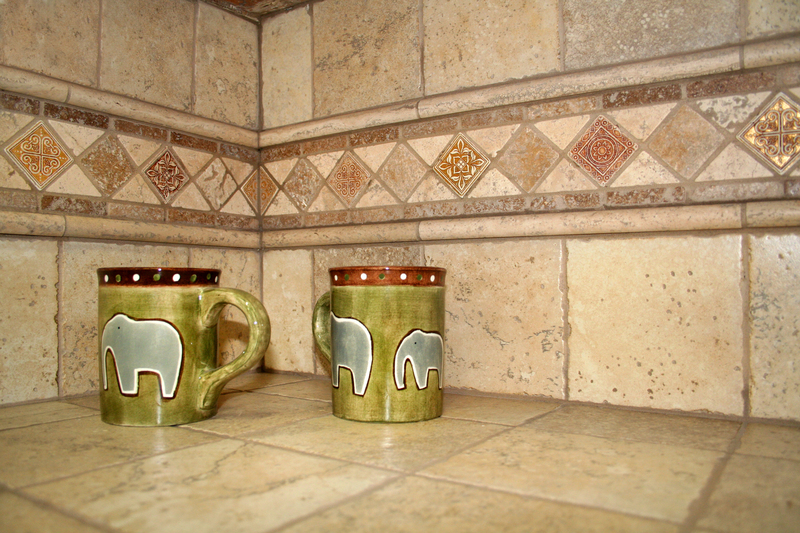Navigate Your Move-Out: Basic Guide to End of Tenancy House Cleaning
Posted on 16/08/2025
Navigate Your Move-Out: Basic Guide to End of Tenancy House Cleaning
Are you preparing to move out of your rented property? Whether you're a seasoned renter or this is your first time moving out, understanding the essentials of end of tenancy cleaning is crucial. A well-executed move-out clean not only ensures you receive your full deposit back but also leaves a positive impression on landlords and future tenants. This comprehensive guide will walk you through all the necessary steps, tips, and checklists to make your end of lease cleaning seamless and stress-free.
Understanding End of Tenancy Cleaning
End of tenancy cleaning, also known as move-out cleaning or lease-end cleaning, is a thorough cleaning process conducted when a tenant moves out of a rental property. Unlike routine cleaning, this process aims to restore the property to its original condition, matching the state when you first arrived, aside from reasonable wear and tear.
Why Is End of Lease Cleaning Important?
- Deposit Recovery: Landlords often deduct cleaning costs from your deposit if the property isn't left in an acceptable condition.
- Legal Compliance: Many tenancy agreements stipulate the need for a professional-grade clean upon vacating.
- Positive Reference: Leaving your former home in pristine condition can help secure favorable references for future rentals.
- Community Standards: Maintaining cleanliness benefits the next tenant and upholds a positive relationship with neighbors and property managers.

How Does a Move-Out Clean Differ from Regular Cleaning?
Regular cleaning tends to focus on visible surfaces and high-traffic areas. End of tenancy house cleaning, however, is much more comprehensive. It requires attention to detail and covering every nook and cranny - from oven interiors to behind appliances. Landlords and letting agents often conduct inspections, and a missed spot could result in a partial deposit loss.
Key Features of an End of Tenancy Clean
- Deep cleaning of kitchens and bathrooms
- Detailed attention to appliances and fixtures
- Wall spot cleaning and stain removal
- Window and glass cleaning
- Hard-to-reach areas like skirting boards and lighting fixtures
Preparing for Your Move-Out House Cleaning
Begin your end of tenancy cleaning preparations as early as possible. Decluttering and packing up non-essential items makes the cleaning process easier and more efficient. Take photos of your property before you start, as these may serve as proof of condition if disputes arise.
Essential Supplies for Effective Move-Out Cleaning
- Multi-surface disinfectant
- Glass and window cleaner
- Degreaser (for kitchen areas)
- Descaler and bathroom cleaners
- Microfiber cloths and sponges
- Scrubbing brushes and mop
- Vacuum cleaner (with attachments for corners and upholstery)
- Protective gloves
- Garbage bags and storage boxes
Step-by-Step Guide: End of Tenancy House Cleaning Checklist
Follow this comprehensive cleaning checklist to ensure all areas are covered for your move-out clean:
1. Kitchen
- Empty cupboards and wipe inside and outside surfaces
- Clean and degrease the oven, stove, and microwave thoroughly
- Remove any food residue from the refrigerator and freezer, defrost if necessary, and clean all shelves
- Sanitize sinks and taps, ensuring limescale is removed
- Wipe down tiles, backsplash, and countertops
- Clean dishwasher and washing machine filters (if included in the property)
- Ensure all extracted dust, grease, and cobwebs in hidden spots
2. Living Room and Bedrooms
- Dust and wipe all surfaces including skirting boards and shelves
- Vacuum carpets and mop hard flooring
- Remove cobwebs from ceilings and corners
- Clean windows from inside and wipe frames
- Launder any provided curtains or blinds (check manufacturer instructions)
- Clean wardrobes and drawers inside and out
- Remove all personal belongings and rubbish
3. Bathrooms
- Scrub bathtubs, showers, sinks, and tiles
- Descale showerheads, taps, and drains
- Disinfect toilet inside and out
- Polish mirrors and reachable glass surfaces
- Wipe down all bathroom cabinets and shelves
- Mop floors, paying attention to corners
4. Hallways and Stairs
- Dust handrails, banisters, and light fittings
- Wipe down doors and handles
- Vacuum or mop staircase and hallway floors
- Ensure no items are left behind
5. Special Considerations
- Pet Odors: If you have pets, deodorize carpets and upholstery
- Wall Marks: Spot clean scuff marks; touch up with paint if allowed
- Garden/Yard: Remove rubbish, mow lawn, tidy hedges (as required by tenancy agreement)
Tip: Tick off each area as you complete it to ensure nothing is overlooked.
DIY Vs. Professional End of Tenancy Cleaning
Should you clean yourself or hire a professional company? This common question depends on your budget, available time, and the level of cleanliness required.
Benefits of Professional End of Tenancy Cleaning
- Guaranteed standards: Many services offer a guarantee, promising to re-clean if the landlord is dissatisfied
- Time efficiency: Experts complete the work quickly and effectively, freeing you to focus on your move
- Compliance: Teams are experienced with letting agent checklists and legal requirements
While professional tenancy cleaning services cost more, they can provide peace of mind, especially for larger properties or when time is tight. However, with diligent effort and this guide, a careful DIY approach can yield excellent results.
Areas Most Commonly Missed During Lease-End Cleaning
Based on feedback from landlords and property managers, the following areas are often overlooked during an end of tenancy clean:
- Behind and under kitchen appliances
- Extractor fans and air vents
- Skirting boards and door tops
- Inside cabinets and drawers
- Light fixtures and switches
- Window sills and steam marks on glass
- Grout and limescale in bathrooms
Remember: Pay extra attention to these areas for a higher chance of passing the final inspection.
Checklist: What Landlords and Letting Agents Look For
Before you hand over the keys, schedule a walk-through inspection with your landlord or agent. They will compare the current condition to the move-in inventory report. Their checks usually include:
- Overall cleanliness of the property, including floors and surfaces
- Functioning appliances and fixtures (fridge, oven, lights, etc.)
- No lingering odors, pet hair, or mold
- Absence of excessive stains, scale, or residue
- Clear and empty storage spaces
- No rubbish or leftover personal belongings
- Garden or balcony tidiness, if applicable
Top Tips for Stress-Free End-of-Tenancy House Cleaning
- Start early - spread cleaning tasks over several days if possible
- Use the original move-in inventory as a reference document
- Enlist help from friends or family
- Take 'before and after' photos for your records
- Don't forget outdoor spaces and shared areas
- Double-check for missed items or spots before finalizing
- Dispose of rubbish and unwanted items responsibly
- Read your tenancy agreement for any specific cleaning clauses
Eco-Friendly Cleaning Options
If you want to minimize chemicals and be environmentally conscious, try these sustainable cleaning options:
- Use vinegar and baking soda for descaling and deodorizing
- Microfiber cloths reduce the need for disposable wipes
- Natural essential oils add pleasant scents without harsh chemicals
- Opt for plant-based, biodegradable detergents
When Should You Start Your End of Lease Cleaning?
Timing is everything. Ideally, start as soon as you begin moving out items, focusing on one room at a time. Reserve deep cleaning tasks--like oven cleaning and carpet shampooing--for the final day, to ensure the property remains in top condition for inspection.
Deposit Deductions: How to Avoid Them
Unreturned deposits are one of the most common complaints among tenants at the end of a lease. Follow these steps to help ensure a full refund:
- Clean every area outlined in your tenancy agreement
- Repair minor damages or report them promptly
- Remove all personal belongings
- Provide all sets of keys and documentation on time
If disputes arise, having 'before and after' photos, receipts for professional cleaning (if used), and a completed inventory checklist can help resolve them more quickly.

Frequently Asked Questions about Move-Out and End of Tenancy Cleaning
Do I have to hire a professional cleaning company?
No. Unless your tenancy specifically requires it, DIY end of tenancy cleaning is usually sufficient. However, some landlords expect or require a professional service, so always check your agreement.
Will I lose my deposit if I miss a spot?
Minor oversights may be overlooked, especially if caused by normal wear and tear, but substantial issues or dirt can lead to deductions. A thorough move-out clean is key.
What are the most essential cleaning tasks?
Kitchen appliances, bathrooms, floors, and windows are the top priorities. Ensure all personal items and rubbish are removed.
How long does end of tenancy cleaning take?
This depends on the size and condition of your property. A typical one-bedroom flat can take 4-6 hours, while a larger house may require most of a day or a professional team.
Conclusion: Leave on a High Note with a Spotless Home
An impeccable end of tenancy house cleaning is invaluable. It secures your deposit, fulfills your contract, and sets the stage for both you and the next resident to start fresh. Following this guide ensures your move-out is efficient and stress-free.
Invest time into your final clean - your bank account, landlord, and new tenants will thank you! For more tips, printable checklists, and advice on end of lease cleaning, stay tuned to our blog.
Ready to tackle your move-out cleaning? Bookmark this guide and ensure your next transition is as smooth as possible!



